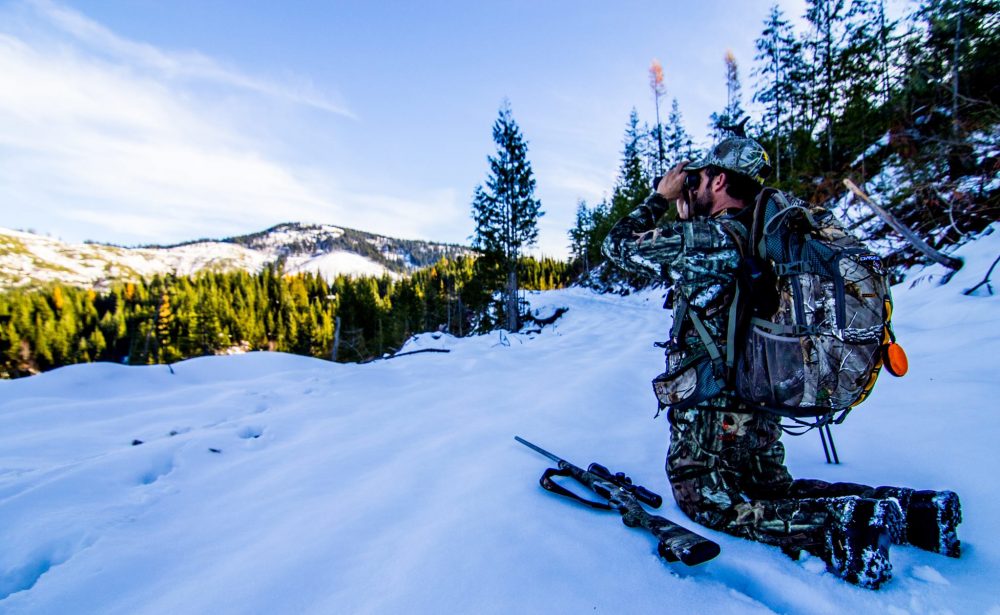Hunting in cold weather presents unique challenges and rewards. Whether you’re tracking game through snow-covered forests, stalking along frozen marshlands, or setting up a stand for a big buck, the cold temperatures can make your hunt more difficult—but also more rewarding. To handle these conditions effectively, it’s essential to understand how the weather impacts both your hunt and your body, and what you can do to stay comfortable, safe, and successful in the field.
In this article, we’ll explore how cold weather affects your hunting experience, along with key tips on how to prepare, stay warm, and make the most of your cold-weather hunting trips.
Why Cold Weather Hunting is Different
Cold weather hunting isn’t just a matter of bundling up and braving the elements. It’s about understanding how cold impacts your gear, your comfort, and your ability to make successful shots.
- Game Behavior: Cold weather affects the activity levels of the animals you’re hunting. For example, many animals become less active in extreme cold, making them harder to spot or track. However, cold fronts or a deep winter chill can also drive some animals to feed more aggressively, making them easier to locate. Understanding these patterns is critical.
- Gear & Clothing: Cold weather demands specialized hunting clothing and gear to keep you warm without sacrificing mobility. The wrong clothes or improperly prepared gear can lead to discomfort, frostbite, or even hypothermia in extreme cases.
- Shooting Conditions: Cold weather can also affect the way firearms or archery equipment perform. For example, extreme cold may make metal parts of guns or bows stiffer, and ammunition might behave differently. Similarly, you’ll need to factor in the way cold affects your body—cold hands or shaky fingers can make a steady shot harder to achieve.
Layering for Success
One of the most important strategies for cold-weather hunting is mastering the art of layering. The idea is to wear several layers of clothing that you can adjust as needed to maintain a comfortable temperature without becoming too hot or cold. Here’s how you can layer up effectively:
- Base Layer (Moisture-Wicking): Start with a moisture-wicking base layer to keep sweat away from your skin. Synthetic fabrics, merino wool, or other moisture-wicking materials work best. When you sweat, the cold will cause it to freeze, which can lead to hypothermia, so keeping dry is essential.
- Insulation Layer (Warmth): The next layer should be an insulating one, like fleece or down, which retains heat. This layer keeps you warm even if you stop moving. However, it’s essential that this layer is breathable—if you overheat, it can lead to sweating, which is just as dangerous as not being warm enough.
- Outer Layer (Windproof/Waterproof): The outermost layer should protect you from the elements, such as wind, rain, or snow. Look for durable, waterproof, and windproof fabrics that allow you to remain dry and insulated while blocking the chill of the air.
- Head and Neck Protection: A warm hat and neck gaiter or balaclava are essential. Your head and neck are major heat loss points, so keeping them covered helps regulate body temperature.
- Hands and Feet: Layered gloves and thermal socks are must-haves. Consider heated gloves or hand warmers for extra comfort. For feet, choose insulated boots that offer traction on icy terrain but also keep your feet dry.
Staying Warm in the Field
Once you’re properly layered, it’s important to focus on staying warm throughout the hunt. Here are several ways to ensure you don’t lose body heat:
- Keep Moving (When Possible): If you’re walking or still-hunting, keep your body moving as much as you can. Movement generates body heat, which helps keep you warm. However, when you’re sitting still in a tree stand or blind, it’s a different story—prepare for a longer wait and don’t rely on movement to stay warm.
- Use Hand Warmers and Foot Warmers: Pack a few hand and foot warmers that you can activate when needed. These small pouches will provide instant heat and can be a lifesaver in frigid conditions.
- Take Advantage of Your Shelter: If you’re out for an extended hunt, be sure to have a shelter or blind that protects you from the wind and provides a dry place to rest. A portable hunting blind or shelter can offer a quick break from the elements and give you time to warm up.
- Stay Hydrated and Fueled: Eating and drinking properly can help maintain your body temperature. Cold weather hunting can make you feel less thirsty, but staying hydrated is crucial. Carry water in an insulated bottle to prevent it from freezing. Also, bring high-calorie snacks like energy bars, jerky, or trail mix to keep your energy levels up.
Understanding Animal Behavior in Cold Weather
As the temperature drops, the behavior of the animals you’re hunting changes. Some animals become more active in the colder months as they search for food, while others may hunker down and conserve energy.
- Deer Hunting: In the winter, deer are usually in their rut, which can make them more active and easier to track. They may seek shelter in thick underbrush to stay warm, or they could be out in open fields foraging for food. Understanding deer patterns in cold weather is key—look for areas with good cover near food sources.
- Waterfowl Hunting: For waterfowl, cold weather generally brings more birds into migration. Geese, ducks, and swans often head south when temperatures drop. Cold weather forces these birds to find open water to feed and rest, making it a perfect opportunity for hunters to set up along these waterways.
- Small Game Hunting: Cold weather forces small game like rabbits and squirrels to forage more actively during the day, especially in early morning and late afternoon. Small game hunting can provide an excellent opportunity to bag multiple targets while you’re in the field.
Safety Precautions in Cold Weather
Staying safe while hunting in the cold is critical. Exposure to the cold can cause frostbite, hypothermia, or other health issues if you’re not properly prepared.
- Check the Weather: Always monitor the weather forecast before heading out. Know when extreme cold or a storm is expected so you can plan your hunt around these changes.
- Know the Signs of Hypothermia: Shivering, confusion, and slurred speech are common signs of hypothermia. If you or anyone in your group shows signs of hypothermia, seek shelter and warmth immediately.
- Prepare for Emergencies: In case you get stuck or lost, always carry an emergency kit with essentials like a flashlight, first-aid supplies, matches, and extra clothing.
Conclusion: Making the Most of Cold Weather Hunting
Cold weather hunting offers a unique thrill, but it requires preparation, knowledge, and adaptability. With the right gear, strategy, and mindset, you can enjoy successful hunts despite the chill. Whether you’re stalking your favorite big game or waiting for that perfect waterfowl shot, understanding how to handle the conditions of cold weather will not only keep you safe but also ensure that your hunt is productive and enjoyable.
So, embrace the challenge of the winter months, prepare properly, and head into the field—because some of the most rewarding hunting experiences are found in the coldest weather. Stay warm, stay safe, and happy hunting!


